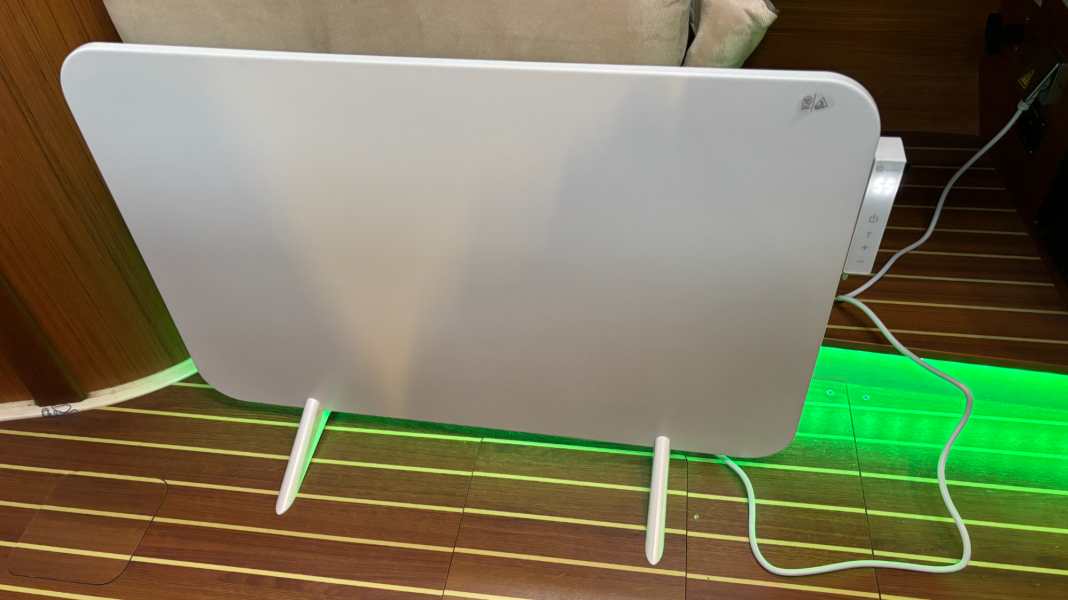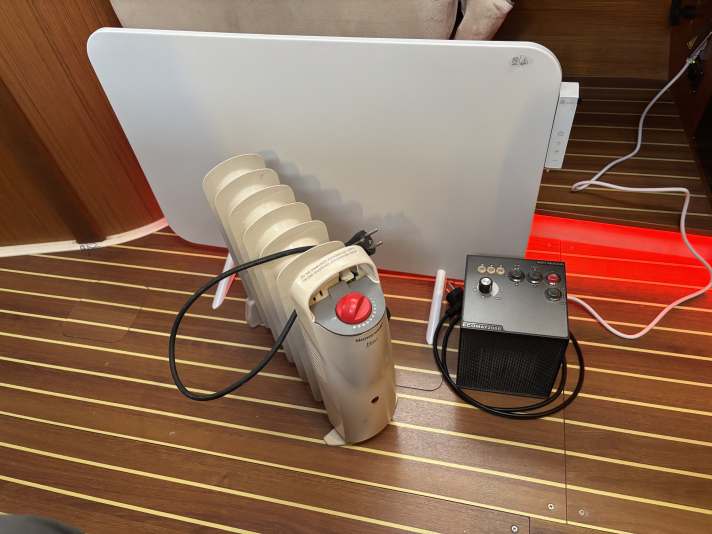
Infrared heaters do not heat the air, but objects and people in the room directly. This results in very efficient and targeted heat generation. Furthermore, they do not cause dry air or stir up dust like a fan heater or a boat heater, which is a particular advantage for allergy sufferers. According to the manufacturer Bringer, infrared rays penetrate up to six millimetres deep into the skin and provide a feeling of well-being similar to the sun's rays. The heat is said to be immediately noticeable when the heater is switched on. Nevertheless, there are limitations in terms of overall performance, as only the areas directly exposed to the rays are effectively heated.
Light, flat and efficient
We tried out an infrared heater on board. Our choice fell on a model from the manufacturer Bringerwhich has a wide range of products, from wall to mirror, ceiling, picture and parking heaters. At around 90 euros, the very affordable mobile parking heater with an output of 450 watts seemed appropriate for a boat just under 40 feet long. According to the manufacturer, it is suitable for rooms with a floor area of up to ten square metres. The heater has a surface area of 70 x 45 centimetres, is only eleven millimetres thick and weighs just under 3.8 kilograms. It can be set up with two feet or hung on the wall; the heat is primarily emitted to the front. Controlled by remote control or smartphone via Bluetooth connection, the heater generates heat immediately. A timer (24 hours) can be used to automate the device, which is precisely controlled by a thermostat. The so-called Window Open function switches off the heating as soon as the hatch or companionway is opened to save electricity.
The heating warms the people first
Effective utilisation requires the correct positioning of the heater. It emits heat in a targeted manner. If it is placed close to the seating area, it heats the people sitting there as well as objects such as furniture and upholstery directly after a short time. This means that even after switching off, the heat is retained for longer than with an air-warming heater. However, the infrared device needs time before the room, in this case the lounge, is completely warmed up. 450 watts of power consumption is a low value, with which even a fan heater only works on the lowest flame. The next most powerful model from Bringer has an output of 740 watts, is just as large and costs 129.90 euros.
All in all, the infrared heater proved to be a good alternative to a fan heater, which stirs up dust, is noisy and consumes more electricity. Like the fan heater, the infrared heater is of course dependent on shore power and, unlike an integrated on-board system, it only heats one room.

